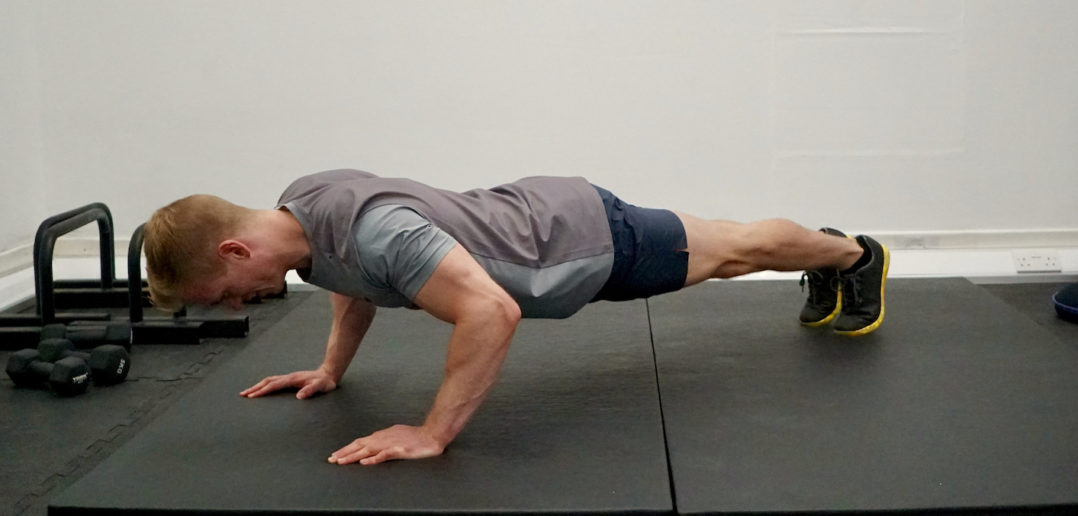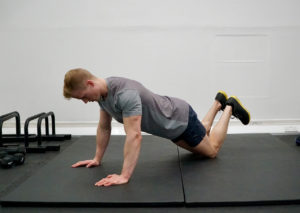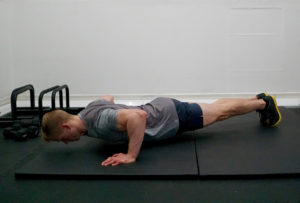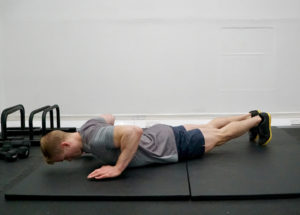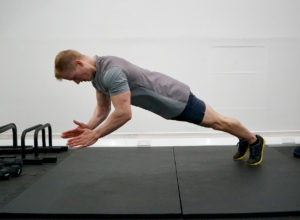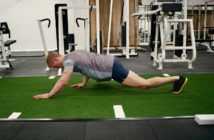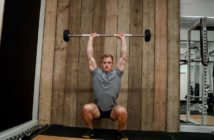It’s difficult to nail one exercise that is the best for any specific body part, with so many variations and viewpoints from different people. For everyone to agree on one exercise is rare. However, we think that the ‘press (or push) up’ is the best all-round chest exercise, especially if you’re limited on time/equipment/space.
Working your whole core, as well as your shoulders, triceps and chest it’s hard not to admire the good old press-up. Few people realise there are other variations, which may make for better gains (chest press/ bench press etc) but bang for the buck press-ups are effective. You don’t need anything to perform them, either, and they are super-easy to make tougher.
This is how we would suggest performing the press-up.
Starting with your hands and toes on the floor, keep your core braced and bend your arms, keeping your elbows at a 45-degree angle (or less) between your sides and shoulders. Go all the way down until your chest is almost on the floor (as low as you can) and then push straight back up to straight arms again. Keep your hands underneath your shoulders (potentially slightly wider if it’s more comfortable) and keep the movement slow and controlled.
What? It’s too easy we hear you say? To make the press-up tougher you can elevate your feet on a bench or the sofa and perform reps that way. Or you could put them on an unstable surface, like a physio ball, which will really work your core. You can be creative with these once they get even easier, add claps in or small hops, bring one foot off the ground outstretched behind you. The list goes on and on.
If you’re struggling with press-ups alone then you can elevate your hands, again on a bench or sofa would work. Or you could start by doing them starting upright against a wall, moving your feet away from the wall to create more load. Another option to make a press-up easier is to start with your knees on the ground, rather than your toes. This decreases the lever length and so takes some of the weight off of your upper body. If you are putting your knees on the floor we suggest you keep your body as straight as possible and keep it slow.
The key thing to remember with press-ups is to keep your elbows in tight to your sides when you’re performing them and remember, if you ‘did not have time’ to go to the gym today then you can always find time to smash out 3 sets of press ups at some point in the day, at work, home or vacation.
If you’ve mastered the regular press-up and want something more challenging, you could get someone to add a weight plate to your back. Alternatively, here are three additional press-up variations you can try:
Strict Press-ups. Another variation if you’re struggling to get quality reps on your toes, is negatives. Chances are you can do the portion of the press up which requires you to lower yourself to the ground, the struggle is pushing back up. So, lower yourself down really slowly, aim for four or five seconds, then drop your knees down and push back up with a stricter form there. This way you get the benefits of what’s called of the eccentric contraction of the full press up, but the easier nature of the knee down press-up.
Chest to Deck Press-up. A variation to make the press-up a bit more intense is the chest to deck press-up. Same position and technique as a standard press up, but when you lower down you go completely onto the floor, lift your hands off the floor, stay paused at the bottom for a second and then put your hands back down and push straight back up. This makes it more difficult because you completely stop your body moving and have to initiate the movement again on every rep.
Clapping Press-up. The final test of chest strength is the clapping press up. The same as a regular press-up in technique and set up, the biggest difference being you need to produce massive amounts of force and velocity as you push up to make you leave the floor, with enough time to clap your hands together and then get them back down to the floor again – before you face plant! This is one of the more advanced variations and some caution must be used when performing it. However, it can provide a fun little challenge for you to try every now and again!
Credit: Shot at Stanza Fitness in Bath

